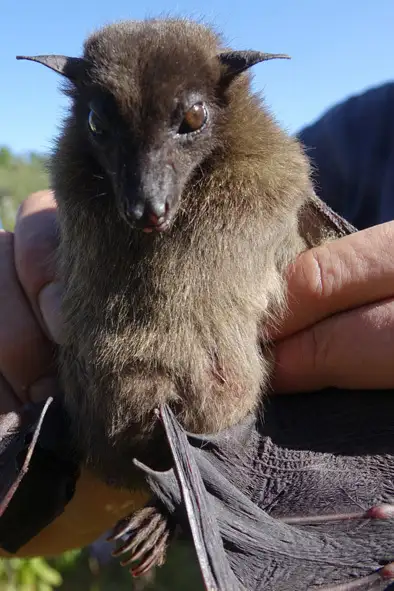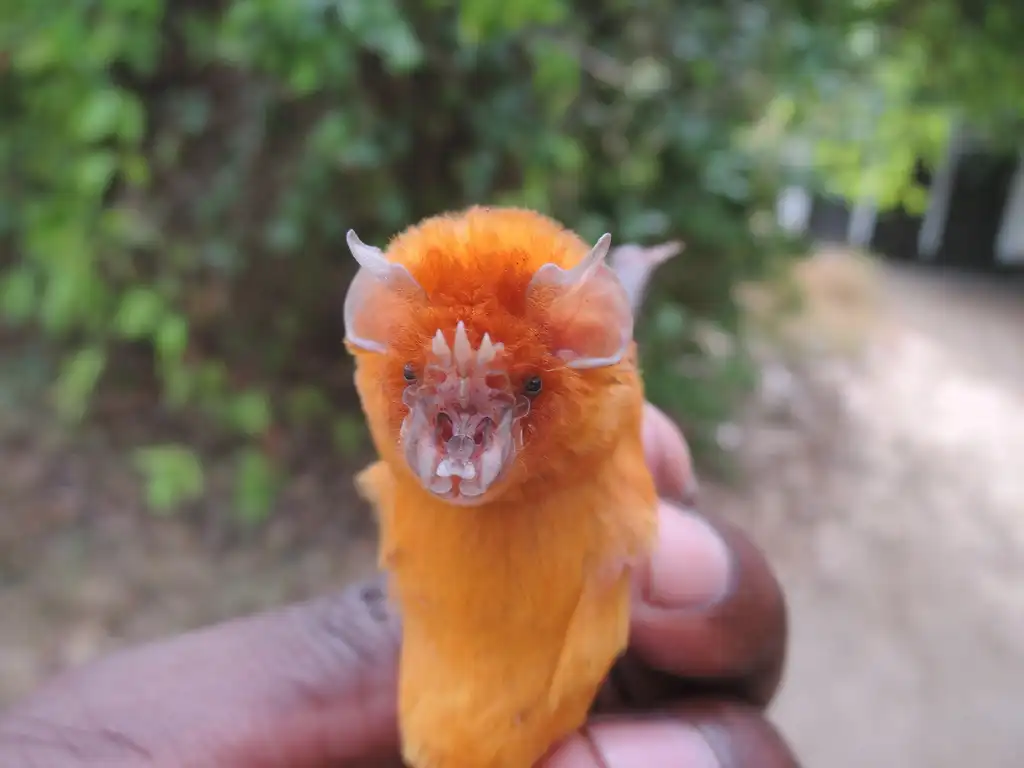Introduction
Bats are fascinating and unique creatures that are often misunderstood. In this part of the world, they are sometimes termed creepy and diabolic! They are often associated with dark powers. Are they truly this evil? Let us find out.
Get to know Bats
After rodents, bats are the second largest order of mammals [1]. With 1400+ known species, they make up 20% of mammals species in the world. Bats belong to the order Chiroptera that is a Greek name meaning, “Hand -wing”. This order was traditionally divided into 2 suborders i.e Megachiroptera and Microchiroptera [4], but as of 2016, it has been split into the Yinpterochiroptera and Yangochiroptera [10]. The Yinpterochiroptera which include the Old World fruit bats Pteropodidae with several species of fruit eating bats, as well as the horseshoe bats. The sub-order Yangochiroptera (or Vespertilioniformes), is a suborder of Chiroptera that includes most of the microbat insectivorous bat families . A few microbats species are known to feed on nectar, pollen and blood [2, 3]. Some of the Yinpterochiroptera which include the Old World fruit bats orient using their eyesight while some of them together with the Yangochiroptera rely on highly sophisticated echolocation mechanisms for orientation and foraging [2]
Bats are easily recognizable due to them being the only mammals capable of undertaking powered and sustained true flight. Though there are other flying mammals such as lemurs, flying squirrels, these only glide in air while bats can stay aloft in air. Bats’ forelimbs are adapted for flight. Their membranous skin which is anchored by four fingers provides a perfect flight surface opposed to avian wings where flight is achieved through feathers, which are supported by two fingers. To fortify their flight, bats have their flight membranes extended downwards and attached to the hindlimbs and in some species the tail is part of this flight membranes. Moreover, their thoracic region and shoulders are massive to provide the flight vigor and maintain balance against the force of gravity. The posterior part of their body is smaller compared to the chest region. The hind limbs are short and modified with curved claws adapted to provide firm grip on surfaces during roosting [3].
Bats are found in all habitats throughout the world other than the polar regions. Their habitats are diverse including forests, arid areas, arable areas,
urban environments among others. It is often common to see them foraging near ponds foraging for insects. Different bats species have specific roosting preferences with bats found roosting in trees, crevices, caves and buildings.
Echolocation is a powerful adaptation present in most bat species. Majority of the bats species employ echolocation for navigation, foraging and communication. They emit calls at ultrasonic frequencies which on hitting obstacles along their path, bounce off the obstacle. Bats will use the reflected signals and decode it to inform what is on their flight paths. Echolocation is also used by many bats species to detect and locate prey by listening to calls being made by the prey such as frogs and beetles. For communication, bats emit calls that often overlap with the human hearing range [5]. Calls by bats will vary in frequencies, duration and structure depending on the species and the purpose which can inform researchers about their species identity, ecology and activity [3].
Turning to their social life, the majority of bats live in groups while a few are solitary. They roost in colonies supposedly to conserve heat since they have high metabolic rates due to their small body size. Mating in bats is diversified as the creatures they are. Temperate bats engage in a promiscuous mating system [2, 3]. For neotropical bats, one male is in charge of a small group of females. This male secures all matings until a stronger male superceded. Interestingly, some bats species are ‘cultured’ and observe a monogamous mating system. The male, female and offspring roost together as a family. The male protects and partakes in feeding the offspring. This is evident in species such as Vampyrum spectrum, Lavia frons, Hipposideros galeritus, H. beatus, Nycteris hispida. For all other species, nurturing is solely the females’ responsibility. More charming, bats of the Hypsignathus monstrosus species engage in courtship rituals. The males gather and display themselves to females who in turn choose their desired mates, which is referred to as lekking mating system [2, 3, 6].
It is mind blowing to learn that bats have relatively long lives. Their lifespan ranges from 10 to 25 years [7]. Myotis lucifigus - the brown bat is the longest-lived bat recorded after an individual was captured 33 years after it was originally tagged [8].
Bats are easily recognizable due to them being the only mammals capable of undertaking powered and sustained true flight. Though there are other flying mammals such as lemurs, flying squirrels, these only glide in air while bats can stay aloft in air. Bats’ forelimbs are adapted for flight. Their membranous skin which is anchored by four fingers provides a perfect flight surface opposed to avian wings where flight is achieved through feathers, which are supported by two fingers. To fortify their flight, bats have their flight membranes extended downwards and attached to the hindlimbs and in some species the tail is part of this flight membranes. Moreover, their thoracic region and shoulders are massive to provide the flight vigor and maintain balance against the force of gravity. The posterior part of their body is smaller compared to the chest region. The hind limbs are short and modified with curved claws adapted to provide firm grip on surfaces during roosting [3].
Bats are found in all habitats throughout the world other than the polar regions. Their habitats are diverse including forests, arid areas, arable areas,
urban environments among others. It is often common to see them foraging near ponds foraging for insects. Different bats species have specific roosting preferences with bats found roosting in trees, crevices, caves and buildings.
Echolocation is a powerful adaptation present in most bat species. Majority of the bats species employ echolocation for navigation, foraging and communication. They emit calls at ultrasonic frequencies which on hitting obstacles along their path, bounce off the obstacle. Bats will use the reflected signals and decode it to inform what is on their flight paths. Echolocation is also used by many bats species to detect and locate prey by listening to calls being made by the prey such as frogs and beetles. For communication, bats emit calls that often overlap with the human hearing range [5]. Calls by bats will vary in frequencies, duration and structure depending on the species and the purpose which can inform researchers about their species identity, ecology and activity [3].
Turning to their social life, the majority of bats live in groups while a few are
solitary. They roost in colonies supposedly to conserve heat since they have high metabolic rates due to their small body size. Mating in bats is diversified as the creatures they are. Temperate bats engage in a promiscuous mating system [2, 3]. For neotropical bats, one male is in charge of a small group of females. This male secures all matings until a stronger male superceded. Interestingly, some bats species are ‘cultured’ and observe a monogamous mating system. The male, female and offspring roost together as a family. The male protects and partakes in feeding the offspring. This is evident in species such as Vampyrum spectrum, Lavia frons, Hipposideros galeritus, H. beatus, Nycteris hispida. For all other species, nurturing is solely the females’ responsibility. More charming, bats of the Hypsignathus monstrosus species engage in courtship rituals. The males gather and display themselves to females who in turn choose their desired
mates, which is referred to as lekking mating system [2, 3, 6].
It is mind blowing to learn that bats have relatively long lives. Their lifespan ranges from 10 to 25 years [7]. Myotis lucifigus - the brown bat is the longest-lived bat recorded after an individual was captured 33 years after it was originally tagged [8].


Left: Fruit bat of species Stenonycteris lanosus, Right: Bat of species Triaenops persicus (Source: iNaturalist )
Are they even important?
Now that we have familiarized ourselves with bats, from their structure, feeding, reproduction, roosting and social behavior to their life span. Let us turn our focus on the importance of these creatures. Do we even need them on earth? Absolutely we do!
Benefits of Bats
Despite being feared and loathed as nuisances, bats are indispensable in our ecosystems. They are vital to our economy and environment. Let's take a look at some of their benefits.
Pollination and seed dispersal – As outlined earlier, many bats species, especially those found in the tropics feed on nectar and pollen grains. In their feeding process, they facilitate cross pollination. Among plants that get pollinated in this manner include mango trees and bananas. This is to say without bats, forget all the valuable and delicious fruit such as mangoes, bananas, etc.
Fruit eating bats facilitate seed dispersal through defecation some miles away from the parent tree. This helps in forest regeneration and keeps biodiversity-loss in check.
Insect Control – Due to their small body size, bats have a high metabolism need. Insectivorous bats feed heavily and can consume up to 1,000 mosquitoes in a typical night. Pest-insect control by bats across agricultural areas are estimated in the millions to billions of dollars, research from Northern America and South Africa has found (REF) This makes them important natural pest control agents, particularly in agricultural areas.
Bioindicators – Bindicator species possess characteristics that can be inferred as an index of attributes such as population density, presence or absence of other species consisting of the biota of interest. Such species need to have traits that make them easily identifiable, easy to study and should be able to respond promptly to stressors in their habitats that are assumed to correlate with other taxa[9]. Therefore, changes in numbers of such a species can be inferred to be closely related to climatic changes. Bats are excellent bioindicators due to their diversity in habitats, feeding, and locality distributions.
Their Dark Side
Bats are proposed to harbor / be reservoir to various viruses and bacteria, with some that can be considered transmittable to humans and other animals. Some of these zoonotic diseases include salmonellosis (i.e infection of the intestinal tract), ebola, rabies, among others.
Bats have also been associated with myriads of parasites. They are known to be a reservoir of protozoans that cause malaria and sleeping sickness. Other parasites such as ticks, bugs, fleas and worms are pests feeding and living on bats as hosts. This said, precautions need to be taken when handling bats.
Threats to Bats
Despite their importance to the environment, bats are facing threats that can lead to severe decline in populations or extinction of populations/species. Some of these threats are:
Habitat Loss – Many bat species are losing their environments they live, forage, breed due to human associated land-use change such as deforestation, urbanization, and agricultural expansion. This can have a significant impact on bat species.
Diseases – Bats are also susceptible to a variety of diseases, including white-nose syndrome, which has killed millions of bats in North America. This disease is caused by a fungus that grows on the noses and wings of bats, and impacts their overwintering hibernation.
Climate Change – Climate change is affecting bat populations, particularly those in arid regions. Rising temperatures and changes in precipitation patterns can affect the availability of food and water for bats.
Conclusion
Bats are fascinating creatures whose importance is often underlooked. After rodents, bats are the second most species rich group. They are the only flying mammals and occupy diversified habitats and exploit various feeding niches, some being carnivorous, others feeding on fruits and some nectar feeders.
Bats have numerous roles in the ecosystem including but not limited to pollination and seed dispersal. They are critical in the biological control of insects and form part of valuable bioindicators. It is also worth noting that bats are reservoirs of zoonotic diseases and thus one should not handle these animals unnecessarily, and when one needs to, should take the required precautions such as using protective gear.
Acknowledgement
The author would like to acknowledge the invaluable studies conducted by Animal Diversity Web that have inspired this blog post. The author is also grateful to Professors Mark Keith and Ciira wa Maina for their insightful contributions.
References
1. https://animaldiversity.org/accounts/Chiroptera/
2. Vaughan, T., J. Ryan, N. Czaplewski. 2000. Mammalogy, 4th Edition. Toronto: Brooks Cole.
3. Hill, J., J. Smith. 1984. Bats: A Natural History. Austin: University of Texas Press.
4. Teeling, E., M. Springer, O. Madsen, P. Bates, S. O'Brien, W. Murphy. 2005. A molecular phylogeny for bats illuminates biogeography and the fossil record. Science, 307: 580-584.
5. Behr, O., O. von Helversen. 2004. Bat serenades--complex courtship songs of the sac-winged bat (Saccopteryx bilineata). Behavioral Ecology and Sociobiology, 56: 106-115.
6. Nowak, R. 1991. Order Chiroptera. Pp. 190-194 in Walker's Mammals of the World, Vol. 1, 5th Edition. Baltimore: Johns Hopkins University Press.
7. Wilkinson, G., J. South. 2002. Life history, ecology and longevity in bats. Aging Cell, 1: 124-131.
8. Kurta, A. 1995. Mammals of the Great Lakes Region. Ann Arbor: University of Michigan Press.
9. Kasso, M., & Balakrishnan, M. (2013). Ecological and economic importance of bats (Order Chiroptera). Isrn Biodiversity, 2013, 1-9.
10. Amador, L.I., Moyers Arévalo, R.L., Almeida, F.C. et al. Bat Systematics in the Light of Unconstrained Analyses of a Comprehensive Molecular Supermatrix. J Mammal Evol 25, 37–70 (2018). https://doi.org/10.1007/s10914-016-9363-8




